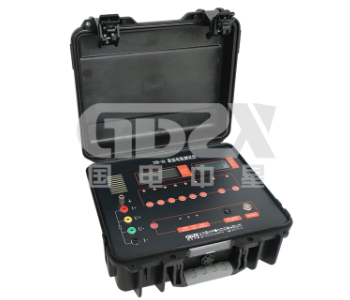NEWSnews
How to avoid these judgment errors in the use of DC resistance testers?
The DC resistance in the DC resistance tester is the resistance presented by the component when DC is passed through, that is, the inherent and static resistance of the component. The portable high current generator is used for primary bus protection and verification of current transformer ratio, etc., and can set and verify the current relay and switch. The domestic light weight and strong load capacity are suitable for primary bus protection and verification of current transformer ratio, etc., and can set and verify the current relay and switch.

The structure of the fully automatic high current generator is divided into four parts: fully automatic control console, circuit breaker, current booster, and voltage regulator. The high current generator is a device specially designed and manufactured according to the electrical equipment tests of power departments and industrial and mining enterprises, such as various switches, current transformers and other electrical equipment for current load tests and temperature rise tests. This series of long-term high current generators consists of two parts: an operating console and a current booster. It has the characteristics of stepless output current adjustment, stable current rise, large load change range, reliable operation, simple and safe operation, etc. It can also be used as a current source device for industrial and mining enterprises to conduct current boost or temperature rise tests. Equipped with a transformer, the test current value can be easily read. For example, a coil has different resistances when it is connected to direct current and alternating current. When it is connected to alternating current, the coil has reactance in addition to direct current resistance. It reflects the cooperation of resistance and reactance, which is called impedance.
Through measurement, it is possible to check whether the conductive DC of the equipment has defects such as poor contact, poor welding, coil failure and wiring errors. In the actual measurement of medium and small transformers, the DC bridge method is mostly used. When the resistance value of the tested coil is above 1 ohm, it is generally measured with a single-arm bridge, and below 1 ohm, it is measured with a double-arm bridge. When using a double-arm bridge connection, the potential pile head of the bridge should be close to the measured resistance, and the current pile head should be connected to the top of the potential pile head. Before measurement, the resistance value of the measured coil should be estimated first, the bridge multiplier selection button should be placed in an appropriate position, the non-measured coil should be short-circuited and grounded, and then the power switch should be turned on to charge. After it is fully charged, press the galvanometer switch and quickly adjust the measuring arm so that the galvanometer means: the component used to indicate the corresponding time in the clock moves toward the zero line in the middle of the galvanometer scale, and makes fine adjustments. When the pointer stops steadily at zero, record the resistance value. At this time, the resistance value of the measured coil = multiplier number × measuring arm resistance value. After the measurement is completed, open the galvanometer button first, and then release the power switch. When using a DC resistance tester, in addition to strictly complying with electrical safety regulations and equipment test regulations, you must also pay attention to the following requirements:
1. Measure when the coil temperature is stable, and the temperature difference between the upper and lower parts of the transformer oil tank should not exceed 3°C;
2. Due to the inductance of the transformer coil, the charging current during measurement is not very stable. It is necessary to count after the current is stable. If necessary, measures to shorten the charging time should be taken;
3. Try to reduce the contact resistance of the wire in the test DC. The transformer tap in operation is often affected by dirt such as oil film, causing poor contact. Generally, it is necessary to switch several times before measuring to avoid misjudgment.
GDZX is a professional manufacturer of secondary protection testing equipment, producing a wide range of instruments and equipment, and a variety of models are available. GDZX is at your service: 4000-828-027, for more information, visit GDZX official website: www.gdzxdl.com.





















